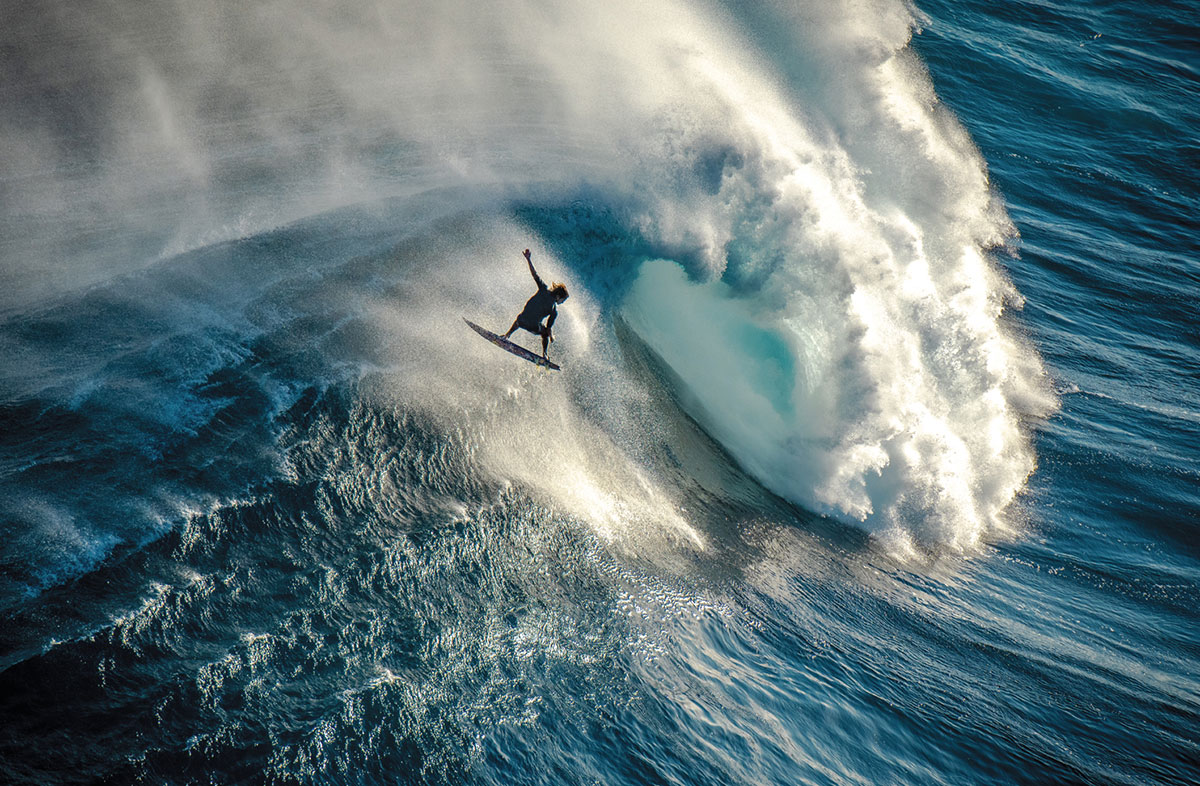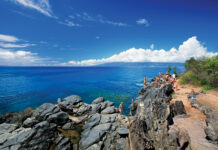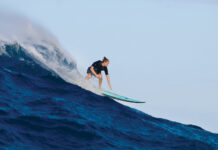
But tow-surfing was not immediately accepted, and surfing purists pooh-poohed it and called it “cheating.” Undeterred, the Strapped Crew continued with their quest to perfect the science of the tow-in and enjoyed uncrowded conditions at Jaws for several years. And while the Crew caught big wave after big wave in rapid succession, paddlers sat for hours waiting to catch a single one — and still wouldn’t buy into the idea.
However, just as the practice of towing into big waves was coming to a technological head, a new crew of paddle-in purists stole the spotlight. “All surfers were like, if you really want to prove you’re in the top you’ve got to paddle in,” says Cabrinha. “Shane Dorian, Ian Walsh, Billy Kemper and a host of other guys decided to tackle it and push the limits. And that is when the whole progressive paddle surf movement took off.”
This shift gave people a new challenge to overcome, a new unrideable realm to demolish and a whole new host of young athletes to school. And with this new press forward came more advances in technology.
“It’s like a seesaw,” says Kai Lenny, pro surfer, Red Bull athlete and eight-time SUP world champion. “As the performance level of the athlete goes up, you’re sort of waiting for the technology to catch up and help you get to the next level. Then the technology blows past and you’re trying to harness all that — while also trying to ride the biggest waves possible in a creative and exciting way.”
One recent invention that has caused some controversy in surfing circles is the inflatable vest: Pull a tab and you puncture a CO2 canister which quickly inflates a bladder inside the vest and pops you up to the surface like a cork. Some consider this a life-saving discovery, allowing users to increase their chances of surviving a two or three-wave hold-down, while others believe it gives those who might not be capable of surfing the big waves a false sense of confidence.
“I am not a person to say who can and cannot go out there — it’s up to the individual,” says Lenny. “But they have to look at reality and see where they are mentally and physically. It’s human nature that people overstep their limits and people definitely get in over their heads out there. A lot of people get pounded, are saved by their inflation vests and probably won’t come back. But others get pounded and realize, I have to train harder, and are back the next day.”





